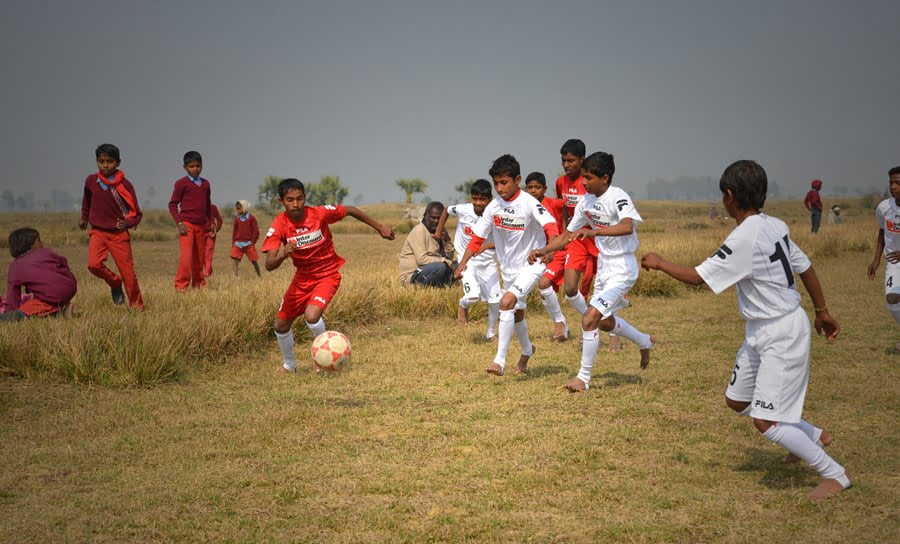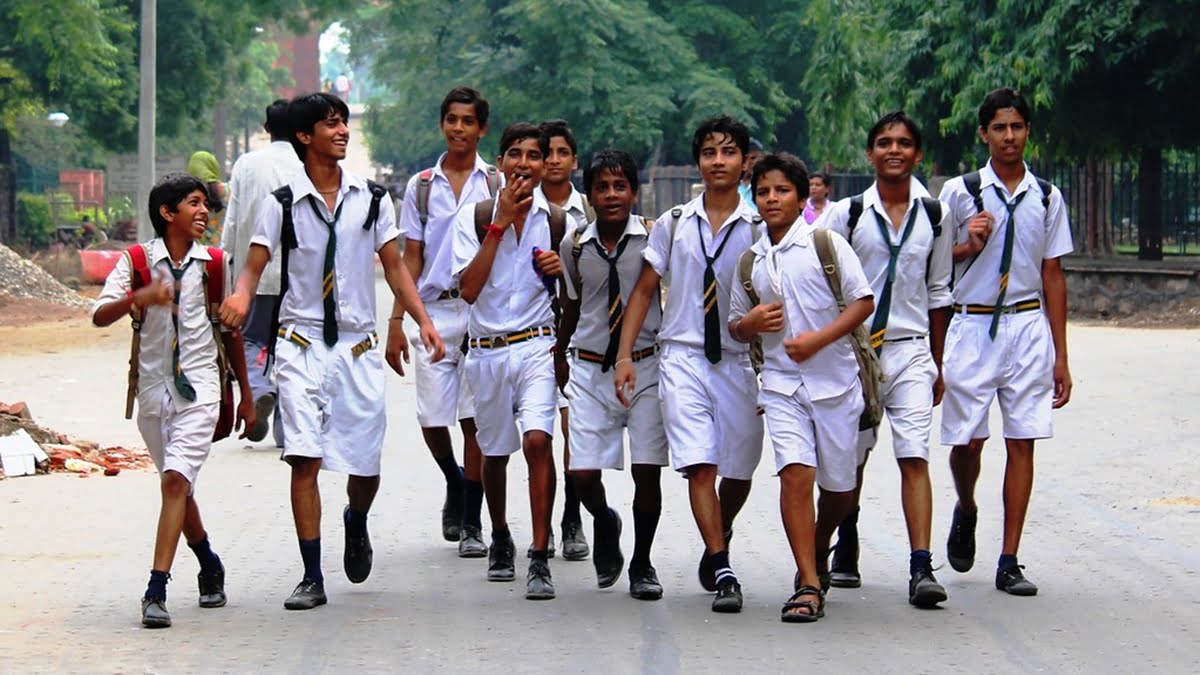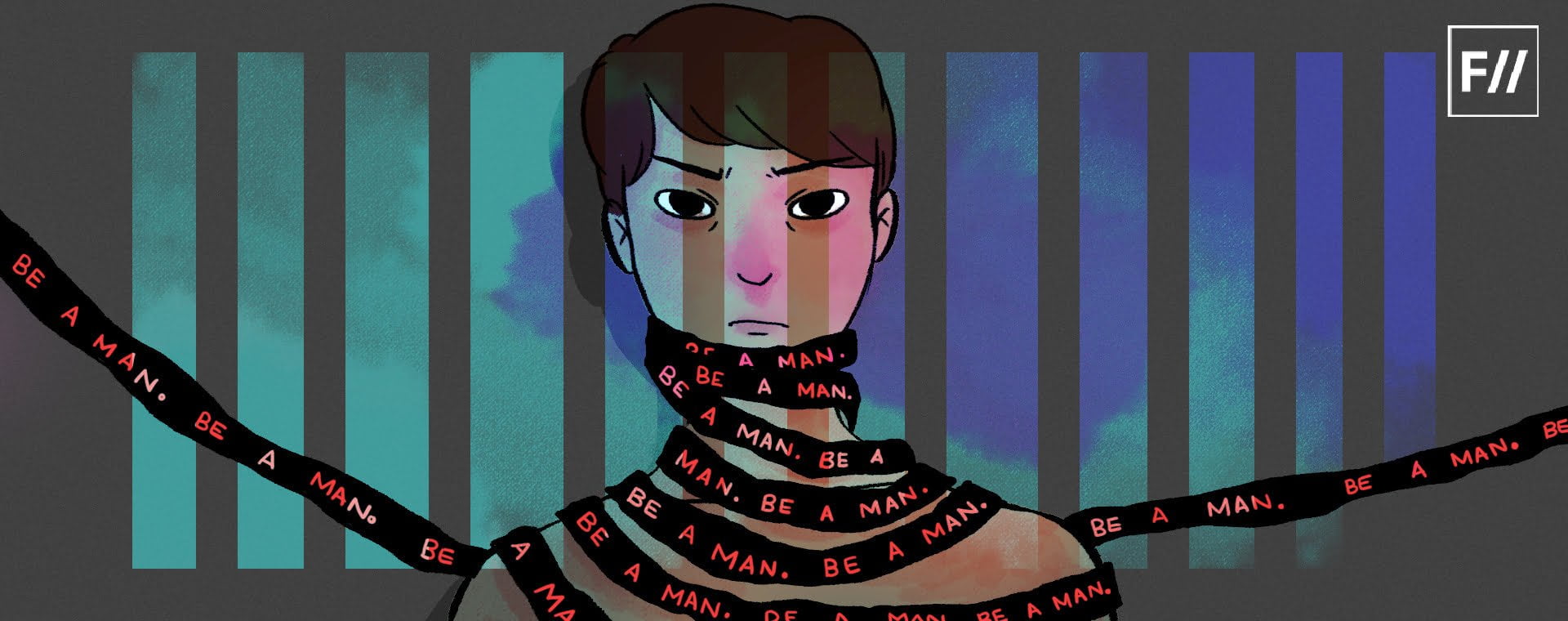Masculine – largely used as an adjective with variations like macho, stud, manly, etc., has manifestations that we evidently see around us in our every day lives through media, our colloquial language, etc. Being masculine is the socially constructed identity of a man or having qualities (including external appearances) that are conservatively associated with being a man. We are not new to comments that scrutinise the mannerisms of those who do not fit into the cis-het man mould: “Kaisa ladka hai tu, jo tu ro raha hai”, “kaisa ladka hai, pit kar aa gya”, “ladke ho, ladkiyo ki tarah kyu chal rahe ho”, and of course, “mard ko dard nahi hota”.
All of these remarks indicate a context, based on specific expectations around how (should) men behave, what clothes (should) men wear, how they (should) walk and talk, what kind of sexual relationships they (should) have, social interactions, and other kinds of choices. Masculine virtues are thus, enmeshed in our social structures, rituals, customs and norms that lead to these expectations from each gender, just like the structured ideas of femininity. I’d like to attempt to understand masculinity using the example of how a school functions in defining gendered binaries, from a feminist, holistic and an empathetic perspective, breaking it away from the expectations associated with it.
Also read: 8 Years Of Ustad Hotel — Celebrating Non-Conformist Masculinity In Malayalam Cinema
What many of us fail to understand is the spectrum that masculinity is. As opposed to what we have been conditioned to believe, masculinity has a wide range. It is not singular and constrained to a particular time and space. It is plural and it is interpreted differently by different groups of people.
What many of us fail to understand is the spectrum that masculinity is. As opposed to what we have been conditioned to believe, masculinity has a wide range. It is not singular and constrained to a particular time and space. It is plural and it is interpreted differently by different groups of people. Masculinity differs with time, space, age, socio-economic class and caste, and occupations. One cannot see masculinity in isolation and is employed to build a power-based hierarchy. I have attempted to understand masculinity from three perspectives.
One, masculinity as a social construct, founded in the unequal distribution of power and privilege over other identities, and even among masculinities, in the form of hegemonic masculinity. Second; defining masculinity as concerning socially constructed binaries vis-a-vis femininity and to look at the different characteristics, behaviors, actions, and ideas of normalcy associated with a specific gender. It helps us to understand and ask what drives men to be more masculine in those binaries. Third, how do boys develop certain kinds of masculine subjectivity as future men?
The virtues and imaginations of masculinity are reproduced, restored, and functions via different institutions. One such institution this essay focuses upon is the school. School is an institution that links family and state, it legitimises the distribution of opportunities and resources as well as cultural values among the students. Different elements in the school participate directly and indirectly with the daily life of the students of every gender. It ensures a gendered employment of curriculum, extracurricular activities, peer groups, interactions with teachers, school uniform, allotment of sports and other verbal and visual practices. Using these as guides, boys pick or form their identities in school, which involve self-fashioning techniques, how they should look like, what games they should play, with whom should they be friends. We see enforcement on the choice and selection of toys, clothes, acts, hobbies, and many more roles by social norms and rules.

A very common example of the rigidly constructed notion of masculinity is that boys should play sports. Sports are about physical strength, teamwork, and played in the public sphere, hence it gives a scope to display all those characteristics. This then goes on to inspire the main-stream media culture to see a Smriti Mandhana, Harmanpreet Kaur or Sakshi Malik as anomalies in a world populated by men. Needless to say, in this process of the rigid creation of identities in which the school plays a pivotal role, also validates unequal division of labor and public-private division within households. Say, if boys are not interested in sports or chose not to play any sport particularly, we see a crack in the structured labels they impose. Their identities then receive no affirmation from their teachers and peers. Meaning, a boy has to play sports and has to refashion their gendered self in a more masculine way, so as to be accepted. They need to somehow be made sense of, so when they do not fit into the conventional masculine labels, they are emasculated. In such situations, peer pressure and expectations play an important role in shaping identities. These are subtle and pervasive but direct and forceful as well.
Masculinity as a social construct, founded in the unequal distribution of power and privilege over other identities, and even among masculinities, in the form of hegemonic masculinity.
Also read: Coming Out As A Gay Man: Questioning The Fragility Of Masculinity
The masculine identity is not limited to choice and representation. It flounders without a particular kind of body to grow within. At school, we see people making fun of scrawny boys, sports teachers ridiculing boys with little interest in sports and for not taking up Science or Commerce (With Maths), etc. Especially in school, the boys are prepared for their destined manly roles and virtues and those outside these patriarchal moulds, struggle to confirm validity. The weight of these expectations and the resultant fears of letting down others have terrible psychological and physiological impacts on these boys.
Many of them try to change themselves to overcome the fears they almost came face to face with, during their school years – fear of being marginalised, fear from being categorised, and not seen as the desired template of an ideal male.
Isha is a Post Graduate in MA In Education from Ambedkar University Delhi. Her MA dissertation thesis focuses upon Visual Graphics in Elementary Social Science Textbooks, their goals and objectives. She is a former teacher and art enthusiast too. She can be found on Facebook and Instagram.
Featured Image Source: Flickr.com




